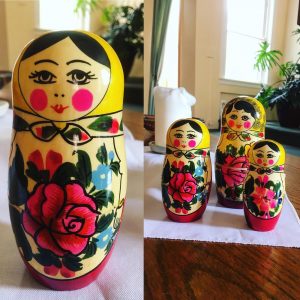Courage, humility, and reconciliation
![]()
Our Cincinnati Mennonite Fellowship’s bulletin for August 26, 2018, reads: ‘What is an Anabaptist Christian? Reconciliation is the Center of our Work’
But what is reconciliation? The thesaurus provides ‘harmony’ and ‘agreement’, but it throws in ‘compromise’ as well. The dictionary definition is: ‘an act of reconciling, as when former enemies agree to an amicable truce.’ These synonyms and definition need more explanation. Anyone can pretend to get along. If the motivation to be a reconciling force does not come from inside, though, we can find ourselves keeping score of how well we try, while harboring resentments about having to appear to be ‘good.’ At least, I can. The following are notes I took from our Pastor Renee Kanagy’s August 28 sermon on Anabaptism and Reconciliation.
____________
Palmer Becker, former director of the Hesston College Pastoral Ministries Program, and international pastor/teacher has written the tract ‘What is an Anabaptist Christian?‘
One of his purposes is to answer the question ‘What does an ideal Anabaptist Christian look like?’
Becker lists three ‘sacred core values’ of Anabaptism:
1. Jesus is the center of our faith.
2. Community is the center of our lives.
3. Reconciliation is the center of our work.
Becker then honors three tenants found in ‘The Anabaptist Vision, a well-known statement made in 1943 by Harold S. Bender, then president of the American Society of Church History.’
1. Christianity is discipleship. It is following Jesus in everyday life.
2. The church is a brotherhood or family. Members not only commit themselves to Christ, but also individually and voluntarily to each other.
3. Followers of Jesus have an ethic of love and nonresistance. As transformed persons, they seek to be reconcilers who reject involvement in violence and war.
Using Palmer Becker’s recent work and Bender’s statement as springboards, our CMF pastor, Renee Kanagy, used colorful Russian nesting dolls during Sunday’s sermon to help us further examine reconciliation. She opened the largest, then the middle doll, revealing the smallest figurine. Working from the smallest to the largest doll, Pastor Renee spoke about reconciliation.

1. The smallest and innermost doll represents being reconciled to God. This assumes that we have a broken relationship to God and that we desire to come back to the life source that connects us to forgiveness and allows us to change our behavior and adopt humility. The inside doll is small, but its property is at the heart of religious reconciliation.
2. The middle doll represents the reconciliation of the self to others. It is the willingness to name how we’ve been hurt by another but to listen to the other’s voice—being willing to sit down and receive each other to do the work so that negative patterns do not continue. Agreeing and disagreeing in love are essential to committing to a life filled with interpersonal richness.
3. The largest, outer doll represents our commitment to being ambassadors of reconciliation. We join together in God’s work, quieting our own voices to listen to God’s movement in the world. Traveling from fragmentation to wholeness strengthens, empowers, and makes us honest about our weaknesses and challenges. When ‘living in the vine’ we can respond peacefully within and without.
Pastor Renee reminded us that many branches of religious thought have emphasized one or another of the ‘dolls.’ But holding them together—not naming one over the other—is crucial for honest reconciliation.
We practice reconciliation when we at Cincinnati Mennonite Fellowship use our basement facilities to feed others, or to write letters about hunger and tax credits for low-income workers, or when we serve on boards and committees. We get tired and want to put one of the dolls down, but they only work together.
Pastor Renee praised Mennonite Church USA’s new executive director and the new director of development—both of whom came from outside Mennonite circles—for being ambassadors of reconciliation. She challenged us as Mennonites to re-examine our own Anabaptist principles of peacemaking and to unite our principles and our actions.

Photo by Alina Grubnyak on Unsplash
____________
Thank you, Pastor Renee Kanagy, Cincinnati Mennonite Fellowship.
The word cloud on the front of the bulletin was created by Mike DuVall as a reflection on his studies in Conflict Resolution and Reconciliation at Trinity College Dublin. The image appears on his blog: mikeduvall.wordpress.com.
____________
I welcome your comments: gretaholtwriter.com/blog.
{Thank you to my niece, Addie Liechty, for taking the picture that is this blog’s featured image. Her blog is: https://addieswriting.wordpress.com.}
Best wishes and have a good week.
Greta